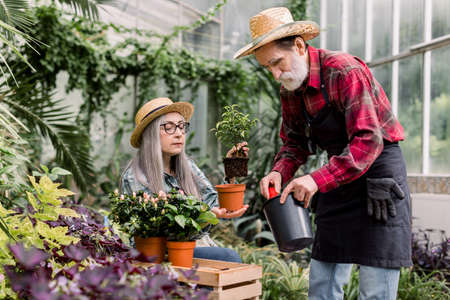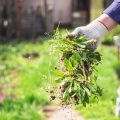1. Understanding Zero-Waste Gardening
Zero-waste gardening is all about creating a garden that produces as little waste as possible while staying healthy and productive. It focuses on using what you already have, reducing reliance on synthetic chemicals, and making the most of natural resources. This approach not only keeps your garden eco-friendly but also helps protect local ecosystems, wildlife, and even your own health.
What Does “Zero-Waste” Mean in Gardening?
In the context of gardening, zero-waste means reusing materials, composting organic matter, repurposing garden scraps, and avoiding products that end up in landfills or harm the environment. It’s about creating a closed-loop system where nothing goes to waste—every leaf, twig, and scrap has a purpose.
Why Avoiding Chemical Pesticides Matters
Many commercial pesticides contain harsh chemicals that can harm beneficial insects like bees and butterflies, contaminate soil and water, and pose health risks to humans and pets. By going chemical-free, you’re supporting a cleaner, safer environment for everyone. Zero-waste pest control methods use natural alternatives that are just as effective without the long-term damage.
The Benefits of Zero-Waste Pest Control
| Benefit | Description |
|---|---|
| Healthier Soil | No chemical runoff means your soil stays rich and balanced for plant growth. |
| Safe for Pollinators | Nontoxic solutions help protect bees, butterflies, and other helpful insects. |
| Reduces Waste | Using homemade sprays and compost keeps packaging and chemical waste out of landfills. |
| Saves Money | Natural remedies often use items you already have at home—no need to buy expensive products. |
How Zero-Waste Gardening Fits Into Sustainable Living
If youre aiming for a more sustainable lifestyle, starting in your backyard makes a big difference. When you reduce your garden’s chemical footprint and reuse natural materials, youre actively contributing to a healthier planet. Plus, its incredibly rewarding to grow plants in harmony with nature instead of fighting against it.
2. Common Garden Pests and Their Natural Enemies
Keeping your garden chemical-free doesn’t mean you have to put up with pests. Nature has its own way of balancing things out — you just need to know which bugs are the troublemakers and who their natural predators are. Here’s a simple guide to help you identify common garden pests in the U.S. and how to attract the right allies to keep them under control.
Common Garden Pests in the U.S.
These are some of the most common pests American gardeners deal with:
| Pest | Damage Caused | Common Host Plants |
|---|---|---|
| Aphids | Suck sap from plants, causing curled leaves and stunted growth | Roses, tomatoes, peppers, beans |
| Cabbage Loopers | Chew large holes in leaves | Cabbage, kale, broccoli, lettuce |
| Tomato Hornworms | Defoliate tomato plants quickly by chewing leaves and stems | Tomatoes, eggplants, peppers |
| Japanese Beetles | Skeletonize leaves and damage flowers and fruit | Roses, grapes, linden trees, raspberries |
| Slugs & Snails | Leave irregular holes in foliage; active at night or on rainy days | Lettuce, strawberries, hostas, spinach |
Natural Predators That Help Keep Pests Away
The best part of zero-waste pest control is working with nature instead of against it. By attracting beneficial insects and animals to your garden, you can reduce pest populations naturally. Heres who you want on your side:
| Beneficial Insect/Animal | Pests They Control | How to Attract Them |
|---|---|---|
| Lacewings | Aphids, mealybugs, whiteflies | Plant dill, coriander, sunflowers; avoid pesticides |
| Ladybugs (Lady Beetles) | Aphids, mites, scale insects | Add fennel, yarrow, marigolds; provide water sources like shallow dishes with pebbles |
| Parasitic Wasps | Caterpillars (like tomato hornworms), aphids | Grow nectar-rich flowers such as sweet alyssum or parsley; avoid chemical sprays |
| Bats | Mosquitoes, moths (including cabbage looper moths) | Install bat houses near your garden or on trees/buildings nearby |
| Birds (such as wrens and chickadees) | Caterpillars, beetles, slugs, snails | Add birdhouses and birdbaths; grow native shrubs for shelter and nesting spots |
Create a Welcoming Habitat for Your Garden Allies
Provide Shelter and Water Sources
Your beneficial bugs and birds need more than just food — they also need safe places to live. Add small piles of rocks or logs for ground beetles. Include shallow water dishes with stones for bees and other insects to land safely while drinking.
Avoid Pesticides — Even Organic Ones Can Harm Good Bugs!
Pesticides don’t discriminate between helpful and harmful insects. Even organic sprays can hurt pollinators and predators if misused. Stick with natural methods like companion planting or hand-picking pests whenever possible.
Diversify Your Plantings
A mix of flowers, herbs, fruits, and vegetables not only makes your garden more beautiful but also supports a wider variety of beneficial creatures. Think of your garden as a little ecosystem — the more diverse it is, the better it will function without chemicals.
By learning to recognize both the pests and their natural enemies, you’re well on your way to maintaining a thriving zero-waste garden that’s full of life — in all the right ways.
![]()
3. DIY Natural Pest Control Recipes
Keeping your garden free of pests doesn’t mean you have to rely on harsh chemicals. With a few common household items, you can whip up powerful pest control solutions that are safe for your plants, pets, and the environment. Below are some easy-to-make sprays, powders, and traps that align with zero-waste gardening practices.
Homemade Pest Control Sprays
Natural sprays are one of the easiest ways to deter insects. You probably already have everything you need in your kitchen.
| Spray Type | Ingredients | Best For | Instructions |
|---|---|---|---|
| Garlic & Chili Spray | 1 bulb garlic, 1 tsp chili powder, 1 quart water | Aphids, caterpillars, beetles | Blend garlic with water, strain, add chili powder. Spray on affected plants. |
| Neem Oil Spray | 1 tsp neem oil, 1/2 tsp mild soap, 1 quart warm water | Mites, whiteflies, fungus gnats | Mix all ingredients in a spray bottle. Apply every 7 days as needed. |
| Citrus Peel Spray | Zest from 2 oranges or lemons, 2 cups boiling water | Ants, aphids | Steep zest in boiling water overnight. Strain and spray. |
Natural Powders That Repel Pests
You can also use dry ingredients to create powders that help keep bugs away from your garden without harming beneficial insects or soil health.
| Powder Type | Main Ingredient | Pests Targeted | Application Tips |
|---|---|---|---|
| Diatomaceous Earth (Food Grade) | Crushed fossilized algae | Slugs, ants, beetles | Dust around base of plants and garden edges; reapply after rain. |
| Baking Soda Mix | Baking soda + flour (50/50 mix) | Cabbage worms, soft-bodied insects | Sprinkle directly on leaves showing signs of damage. |
DIY Pest Traps Using Household Items
Fruit Fly Trap
You’ll need: A small jar, apple cider vinegar, dish soap
Instructions: Pour about an inch of apple cider vinegar into the jar and add a drop of dish soap. Cover with plastic wrap and poke small holes in the top. Flies will go in but won’t come out.
Slug Trap
You’ll need: A shallow container (like an old tuna can), beer
Instructions: Bury the container so the rim is level with the soil surface and fill halfway with beer. Slugs are attracted to the yeast and will fall in.
Aphid Sticky Trap
You’ll need: Yellow paper or recycled cardboard painted yellow, petroleum jelly or castor oil
Instructions: Coat the yellow surface with oil and place near infested plants. Aphids are attracted to yellow and get stuck on contact.
The best part? All these methods make use of things you likely already have at home—helping you save money while keeping your garden chemical-free and sustainable.
4. Companion Planting for Pest Prevention
Companion planting is a smart and natural way to reduce pests in your garden without using chemicals. By placing certain plants next to each other, you can take advantage of their natural abilities to repel insects, attract beneficial bugs, or improve each others growth. Its a great zero-waste gardening method that supports a healthy ecosystem and helps your garden thrive naturally.
How Companion Planting Works
Some plants release scents or oils that pests dislike, while others attract helpful insects like ladybugs or hoverflies that feed on common garden pests. When you combine the right plants together, you create a natural defense system that keeps harmful bugs away and promotes balance in your garden.
Popular Companion Planting Combinations
Here are some tried-and-true plant pairings that help deter pests and boost overall plant health:
| Plant | Companion | Benefit |
|---|---|---|
| Tomatoes | Basil | Repels tomato hornworms and enhances flavor |
| Cabbage | Dill | Attracts predatory wasps that eat cabbage worms |
| Carrots | Onions | Onions deter carrot flies with their strong scent |
| Cucumbers | Nasturtiums | Nasturtiums repel aphids and beetles |
| Lettuce | Chives | Chives keep aphids away from tender lettuce leaves |
Tips for Successful Companion Planting
Start Small and Observe
If youre new to companion planting, try a few combinations and see how they work in your space. Every garden is unique, so its helpful to observe what works best for your plants and local conditions.
Diversify Your Garden Beds
A mix of flowers, herbs, and vegetables not only looks beautiful but also confuses pests and attracts more beneficial insects. Avoid large sections of the same plant, which can become easy targets for pests.
Avoid Bad Pairings
Some plants don’t get along well together and may stunt each other’s growth or attract unwanted pests. For example, keep onions away from beans and peas, as they can interfere with root development.
Example of Plants That Dont Pair Well:
| Plant A | Plant B (Avoid Pairing) | Reason |
|---|---|---|
| Beans | Onions or Garlic | Can inhibit bean root growth |
| Tomatoes | Corn | BOTH attract corn earworms and compete for nutrients |
By planning your garden with the right plant partnerships, you can naturally reduce pests while creating a vibrant and productive growing space. Companion planting is not only eco-friendly—its also fun to experiment with!
5. Garden Maintenance Habits That Deter Pests
Keeping pests out of your garden doesn’t always require sprays or traps. With a few smart habits, you can naturally discourage bugs and critters from making a home among your plants—without creating waste. Here are some easy, eco-friendly practices that support a healthy, chemical-free garden.
Crop Rotation
Planting the same crops in the same spot year after year invites pests that feed on those specific plants. By rotating crops each season, you break pest life cycles and reduce infestations naturally. For example, follow tomatoes with beans or leafy greens to confuse pests and help the soil recover.
Proper Plant Spacing
Crowded plants trap moisture and limit airflow, creating the perfect environment for pests and fungal diseases. Give each plant enough space to grow freely based on its needs—this helps keep your garden dry, breezy, and less attractive to insects.
Mulching
A layer of organic mulch (like straw, shredded leaves, or wood chips) helps suppress weeds, retain moisture, and regulate soil temperature—but it also acts as a barrier against crawling insects like slugs and beetles. Just make sure not to pile mulch too close to plant stems to prevent rot.
Mulch Material Comparison
| Type of Mulch | Pest Control Benefit | Best Use |
|---|---|---|
| Sawdust/Wood Chips | Deters crawling insects; long-lasting | Around perennials and shrubs |
| Sugarcane Mulch/Straw | Keeps soil moist and cool; breaks down quickly | Vegetable beds and annuals |
| Dried Leaves/Grass Clippings | Adds nutrients while deterring soft-bodied pests | Mature gardens and compost-friendly areas |
Tidy Up Regularly
Pests love hiding in piles of dead leaves, weeds, and debris. Make it a habit to clean up garden waste frequently. Prune dead branches, remove fallen fruit, and weed often to eliminate hiding spots for unwanted visitors.
Diversify Your Plants
A diverse garden is more resilient. Mixing flowers with vegetables attracts beneficial insects like ladybugs and lacewings that eat harmful bugs. Plus, some companion plants naturally repel pests—for example, marigolds deter nematodes near tomato roots.


